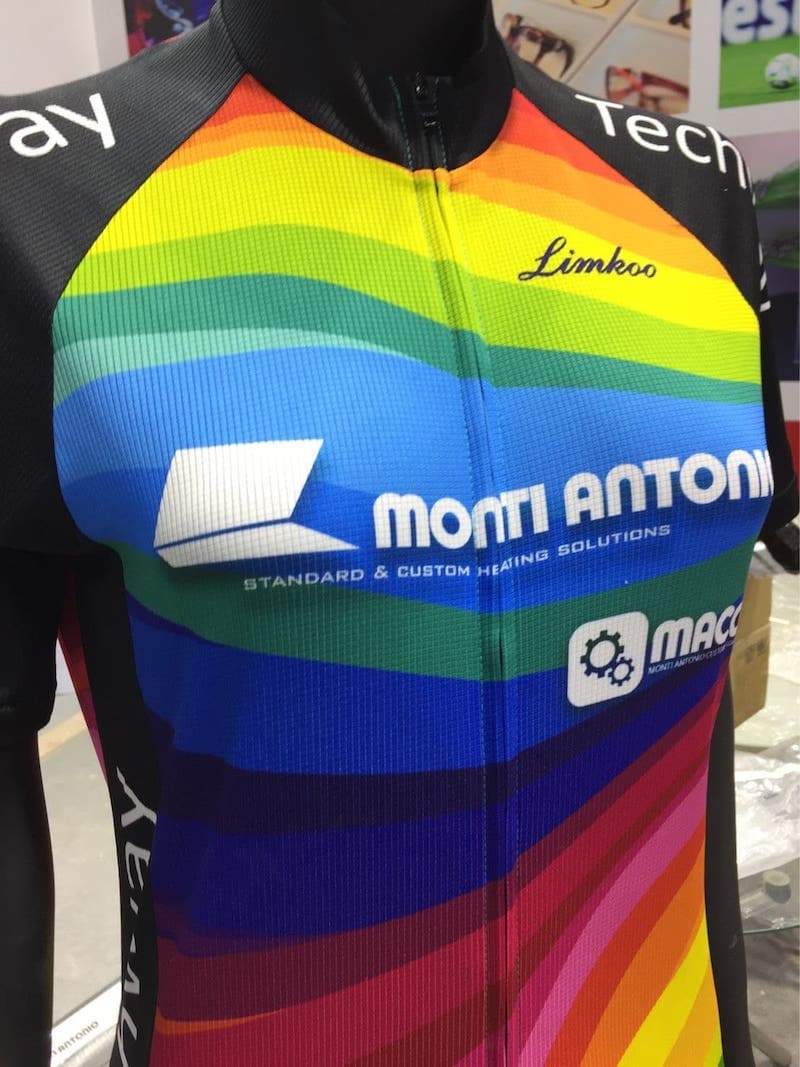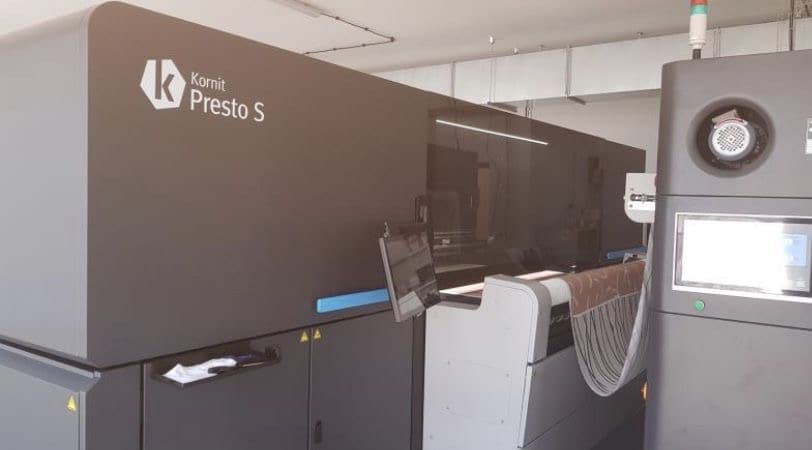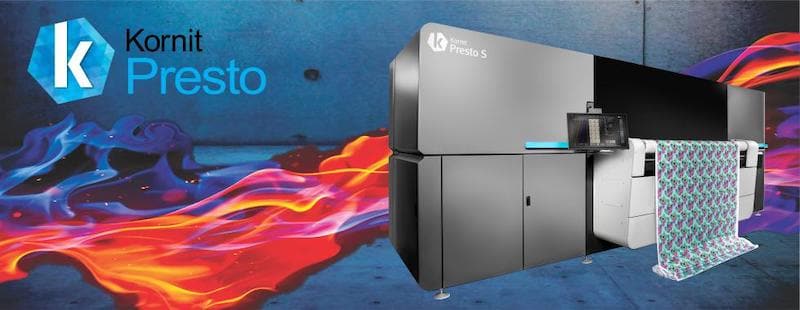An Interview with Kelvin Hung, the Digital printing specialist
Year 2020, has drew the line of human living style. From Globalization to Distancing. Peoples are more relied on the internet in social connection and changing their buying behaviour from brick and mortar to e-commerce platform.
Kelvin Hung, a digital specialist has over 3 decades of experience in the digital printing field for many industries in Asia and China.
“Textile is the most difficult sector migrate from traditional to digital, challenging but encouraging. It’s a must for the future clothing industry,” he said
Please let us know more details about the “Textile Digital Printing Industry in China”.
China has committed to reduce its overall carbon emission no later than 2030 and eventually reach “carbon neutrality”, which means Zero-Carbon emissions by 2060. This is very clear to draw a picture of all China industry has to go zero-pollution and need sustainable production. Water control is very restricted in the industrial area. Cross the limit means stop the factory and cease the production.
Digitalization and automation for the Textile industry are the very hot topic in the forum and discussion group. Especially, Alibaba China, the E-platform giant has recently setup an intelligent factory in Hangzhou. They had kept the secret for 3 year in developing the fully automated “Rhino” system and collaborate with their big data management to control cost and speed. They are now can accept any apparel order for 100 pcs and return on 7 days. Claimed to be increased the productivity to 2000pcs any kind of garments in 5 minutes. Compare with other factories in China, they shorten 75% delivery lead time, 30% of stocking and 50% of water usage.
This is an impact that encouraging China textile company to speed up the modernization of their production facilities. In order to fulfill the on-demand order request and prompt response to the delivery schedule. Waterless production is the trend for a sustainable process for textile and garment making.
The success of E-commerce in China, even facing the trade war and COVID quarantine, the domestic consumptions are still strong, On-line promotion and KOL creating the incredible sales lead, has encouraged small enterprises and fashion company to accept the on-demand order. Provide green and clean solution to make product and fast delivery to customer’s hand.
Obviously, Digital is the solution and the industry is fully adapt to the change by upgrading their machine. The China textile and garment industry has come to the 3rd wave of migration to digitalization and automation.
Could you please give us a brief about textile printing machinery revolution in the past 10 years?
In the past decade, the design of the textile printers is not changed too much. It’s only enhanced the printhead quality and quantity. Enlarge the machine width and drying facilities. But the manufacturing base has been changed from Japan and Europe to China.
In the beginning, only the piezo printhead technology is suitable for using of different kind of ink. Therefore, Epson printhead is widely used in making the inkjet to serve the various of industry. Textile, one of the important sectors, many companies from Japan and Europe has made used of the technology to launch their textile printer successfully. In fact, they started from the Dye Sublimation ink for printing paper and make use of the Calendar to transfer the image to the sportwear and make success of the waterless production with brilliant color and nice quality.
However, the license printhead is costly and China manufacture has disassembled the desktop inkjet to get the printhead and install to the large format printer chassis to get their localized printer. Because the cost cut, it encourages the China textile dye-sublimation market blooming and become the 1st wave of the digitalization.
In fact, this is no harm to the business of the licensed printer manufacture, on the contrary, it stimulated the sales of the printer, because the stability and reliability is very important to the production. The well developed and good quality control printers can still be dominated by the market. Until the 2nd wave come.
Inkjet technology become more important for manufacturing sectors, many Japanese company like Kyocera, Konica Minolta, Fuji Xerox, Ricoh, Brother, Seiko……etc. has come out many piezo printhead and open to the market with electronic control and capping system. These are easier for the printer manufacture to design and make use of the printing technology to upgrade and produce much reliable printing device. People are more seriously to look into the solution for other fabric, not only polyester. Direct to Textile (DTT) printer is 2nd wave of the revolution.
In fact, DTT before isn’t too popular as the printing process is more complicated, need pre and post treatment, experience in color management and not many China manufacture can produce the machine. This was implicated high cost and technical support. The open of piezo technology has encouraged more China player to the market, in addition of the government environmental control, it’s pushing more factories to go for digitalization.
Besides of the hardware evolution, the ink solution also put a greater help, more colors of ink available. Better diffusion and fastness, less treatment required and eliminate the harmfulness material. Those has made the production more sustainable than the traditional process.

Therefore, a hybrid machine combine with screen and digital printing has been built for the Garment printing purpose, the screen handles the white background and the color image will be printed digitally. However, this solution has limited flexibility and only suitable for mass production.
The sophisticated technology has fully used by means of the numbers of printhead and the ink combination. The super-fast speed can be obtained by the array of fixed printhead for running the material 90meters/ min. 12 Colors or even more print channels to extend the wider color gamut and process the pre and post-treatment all in one process. Waterless solution for sustainable printing with using much powerful ink on different material and good fastness result, better hand feel, brilliant color performance…etc. Digital textile printing is challenging, not only hardware but the experience of the manufacture is very important to get support to the needs and quality control.
Can you compare traditional printing and new digital printing technology? Some-times end users think digital printing quality is not as good as traditional systems.
This is a very interesting topic, in fact, digital printing can offer flexibility printing, no quantity limits. Better dot gain control to give fine line and small characters. Sharper image quality and less bleeding effect. Less ink usage, by means has less water treatment needed, even zero washing requirement. No need to prepare screen or graveur, less labour involved, save time and electricity. Simple processing, small size of the machine and less space required.
The digitalization has involved investment and learning period, the migration need patients and insistence, has to understand the difference in between traditional and digital and also work across the digital line and not confuse by the traditional method.
Traditional printing is cost effective for mass production, but create more wastage and water consumption in the environment. Detailing is not as good as digital but the density and color diffusion is much better, because the traditional printing cannot control the ink well and put the excess for managing by the water treatment.
Also, the ingredient size and numbers inside the ink has be controlled for working smoothly flow in the printhead. Therefore, the density of ink cannot be simply like the traditional ink to perform the good darkness and diffusion.
In addition, digital has limited color gamut as normally controlled by CMYK or now has more varieties up to 12 colors, but not like the traditional ink color mixing physically by creating spot color or some critical pantone.
These may imply the negative feedback from end user in digital printing. However, the improve of ink density and more variety of ink color choice. Most of the customers are understanding the limit of digital printing, those issues are not too significantly over the sustainable solution.
As a digital printing expert, what do you think about digital printing potentials in Turkey, Middle east and Africa?
I can see the world changing after COVID. Peoples more rely on internet communication, sure the E-commerce platform will be the next economic hunting field.
Amazon has invested USD400 million for sustainable printing of the on-line Luxury fashion with Kornit digital. Alibaba has set up the “made-in-internet” factory for accepting the on-demand order from the small enterprise and fashion house with a prompt delivery response.
Digitalization and automation are the matter of facts that all factories and manufactures need to think about, as the industrial 4.0 is urging in the industry, the corporation has to prepare and make ready for the change. This will come very fast like a tsunami, if you are not involved in any digital production, would suggest to get any system for starting and learn.
COVID 19 shows us we should rely more on sustainability and green products, please let our readers know how much textile digital printing with new technologies is green and what is the benefits for our planet?
Sustainability and green mean less use of water and energy, less emission of Carbon and keep the planet temperature stable and no harmful material created and use in the manufacturing process.
In textile digital printing, we can roughly category the printers in 3 type Direct to Paper (DTP), Direct to Textile (DTT) and Direct to Garment (DTG).
DTP- just like the normal inkjet printer, with heater to dry the ink on paper for best transfer result. Only for dye sublimation ink need to work with a calendar for the polyester fabric processing.
DTT- Printer with the convey belt design to handle flex fabric and elastic material, can use many types of ink for handle different kinds of fabric. The process can be thermal fixing or need water treatment and steam. All depends on what kind of ink use.
DTG- Printer normal work for T-shirt printing. With a rectangular base to put the cloth on and print directly with pigment ink. Need pre-treatment to enhance the colour and fastness. Use a thermal press to fix the color and need the white ink to cover the color background for the T-shirt.
In fact, digital printing can control the ink dot gain by using the RIP station. These also control color density and ink consumption. Therefore, color management is an important part of digital printing.
Use of ink also determines how clean of the solution, as ACID and Reactive ink will need water to process the color fixing, even ink has been controlled but still has little ink come out from the washing and steaming.
The waterless solution is Dye sublimation and Water pigment. However, they also have their limits in production
Dye sublimation – only good for polyester fabric, also need a stable calendar to process the transfer from paper. Unstable heat control will cause color stability problem. Widely use in sportwear and activewear production.
Water Pigment – Good for many fabrics, fastness depends on the material. Best in cotton, but the color density is not perfectly reflected as the pigment characteristic and the large particle degrade the color performance. For home textile and light color fashion is perfectly good. Also, white ink available can be used to color T-shirt printing. The thermal press can fix the color, no water treatment needed.
In fact, the water pigment has been improved a lot in these few years, thanks for the Nanotechnology, the pigment size has reduced a lot and some ink also combine with the binder inside the ink for eliminating the pre-treatment to get the better color performance and fastness of the printout.
Some pigment printer has put the process all in one inside the printer. Just need to load the raw fabric to the printer. It can make all the way to finish the printing and fix with great color performance and fastness with soft hand feel.
Technology is improved day by day. We can see the future of textile printing will be more flexible and easier. Less water usage and wider color gamut, better fastness that will maintain the fabric structure after printing.
What digital equipment should start off and what is the future of fashion for digital printing?
In my point of view, the balance of the cost and quality is important. You have decided which sector of your products made. If you need quality and stability, you can consider the Japanese or European machine. For sure, you will get no disappointed and assure your productivity consistency.
In terms of cost, China products can give you an alternative. It should be good for more experienced user, as the machine need to pay more attention for taking care.
However, the performance still be good as long as you are choosing the right place to buy.
The digital give us convenience and easy printing for making apparel and fashion.
Order quantities and delivery lead-time are no longer the barrier in production. Peoples are looking for more variety in design and function in clothing. There are more personal informative data go through the E-commerce experiencing for tailor-made the products.
The fashion is not just for wearing and showing esteem but also can be used to measure body condition and playing as an electronic device with communication feature in future. Metallic printing for circuitry in the textile world would be another development direction for the ink and printhead supplier to study.
Digital textile printing creates unlimited idea and opportunities, is it a right timing to grab during the COVID? This is a question for the reader to think………






















